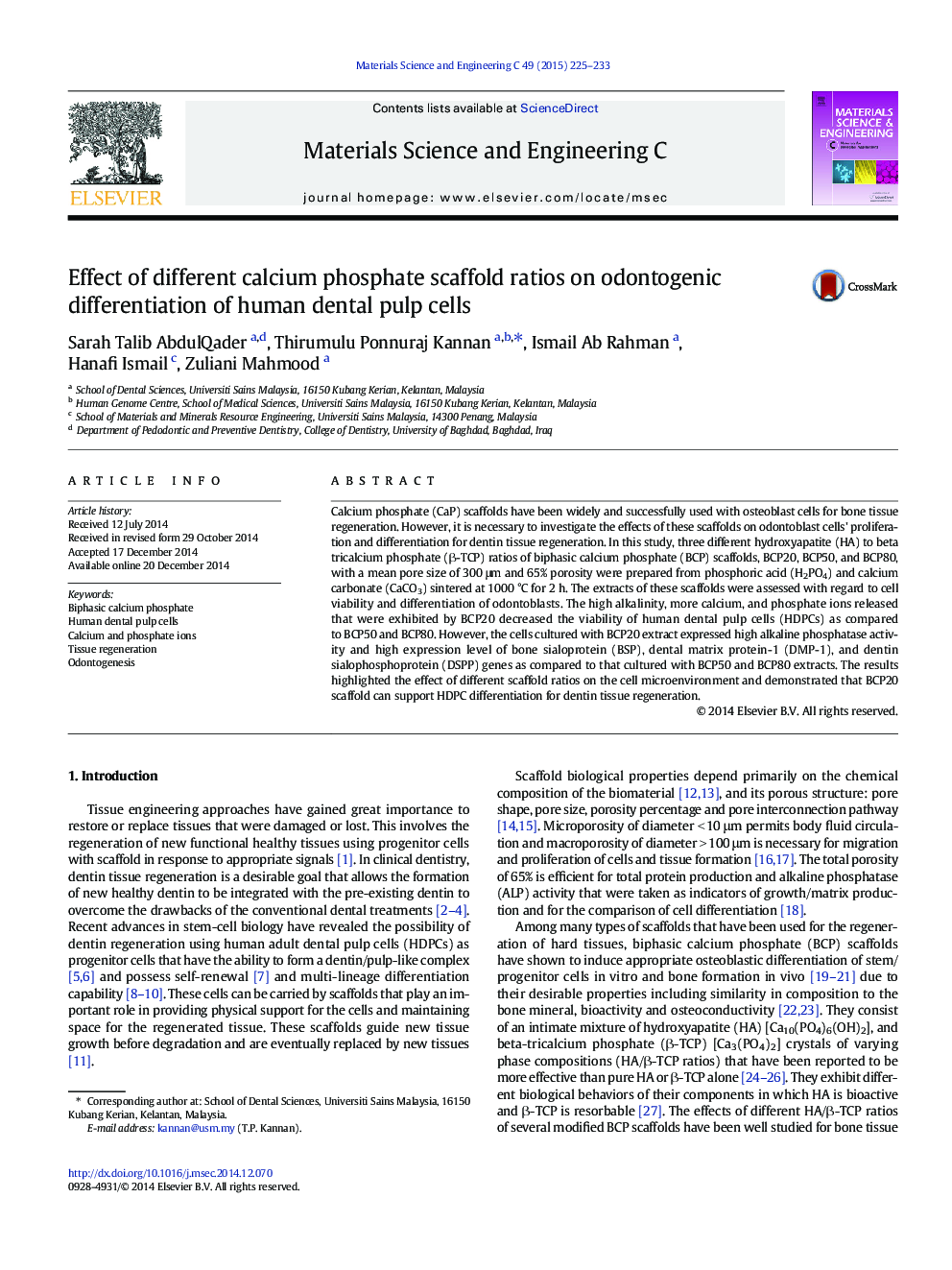| Article ID | Journal | Published Year | Pages | File Type |
|---|---|---|---|---|
| 1428173 | Materials Science and Engineering: C | 2015 | 9 Pages |
•BCPs of different HA/β-TCP ratios influence cell microenvironment.•BCP20 decreases cell viability of HDPCs as compared to BCP50 and BCP80.•HDPCs cultured with BCP20 express highest ALP activity.•HDPCs cultured with BCP20 up-regulate BSP, DMP-1 and DSPP gene expressions.•BCP20 can support HDPC differentiation for dentin tissue regeneration.
Calcium phosphate (CaP) scaffolds have been widely and successfully used with osteoblast cells for bone tissue regeneration. However, it is necessary to investigate the effects of these scaffolds on odontoblast cells' proliferation and differentiation for dentin tissue regeneration. In this study, three different hydroxyapatite (HA) to beta tricalcium phosphate (β-TCP) ratios of biphasic calcium phosphate (BCP) scaffolds, BCP20, BCP50, and BCP80, with a mean pore size of 300 μm and 65% porosity were prepared from phosphoric acid (H2PO4) and calcium carbonate (CaCO3) sintered at 1000 °C for 2 h. The extracts of these scaffolds were assessed with regard to cell viability and differentiation of odontoblasts. The high alkalinity, more calcium, and phosphate ions released that were exhibited by BCP20 decreased the viability of human dental pulp cells (HDPCs) as compared to BCP50 and BCP80. However, the cells cultured with BCP20 extract expressed high alkaline phosphatase activity and high expression level of bone sialoprotein (BSP), dental matrix protein-1 (DMP-1), and dentin sialophosphoprotein (DSPP) genes as compared to that cultured with BCP50 and BCP80 extracts. The results highlighted the effect of different scaffold ratios on the cell microenvironment and demonstrated that BCP20 scaffold can support HDPC differentiation for dentin tissue regeneration.
